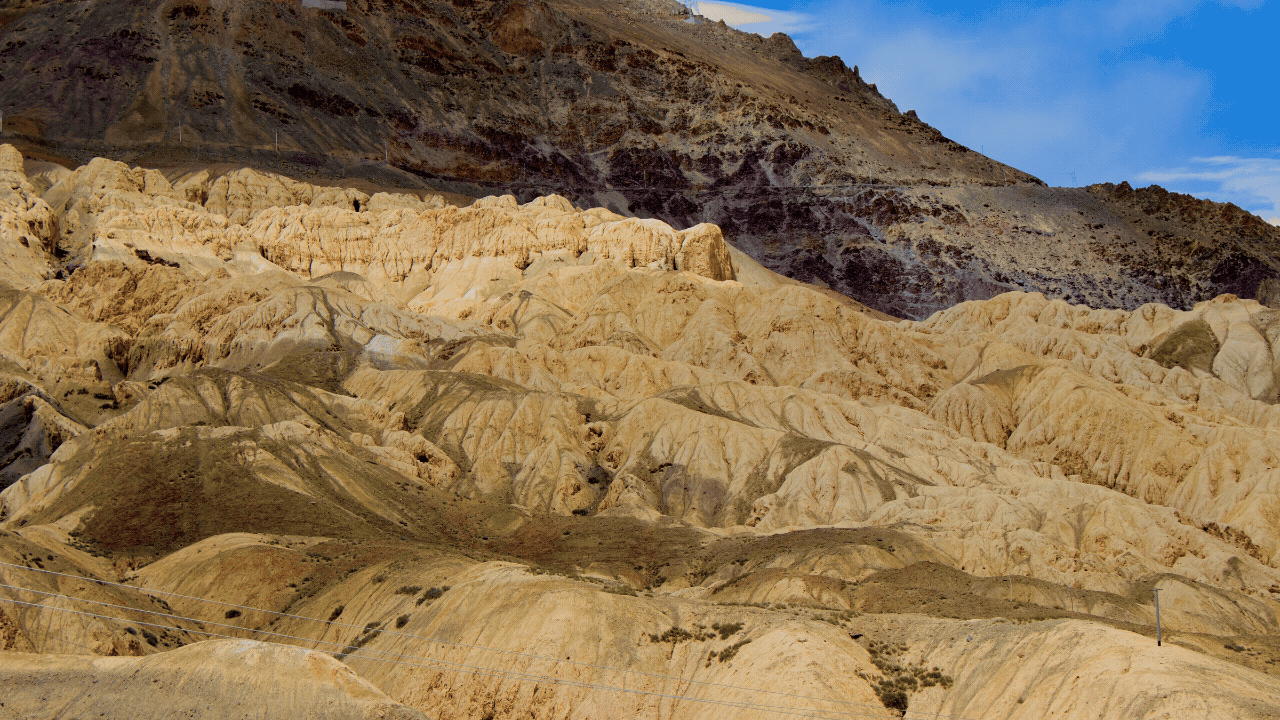[ad_1]
BENGALURU: Scientists from Indian Institute of Science (IISc) and Birbal Sahni Institute of Palaeosciences (BSIP) have recognized Ladakh as a really perfect location for India’s first Mars and Moon analogue analysis station. Their proposal leverages previous analysis in addition to their very own discipline work expertise.
The analysis work, carried out by Binita Phartiyal from BSIP together with IISc’s Aloke Kumar and Shubhanshu Shukla — one among India’s 4 Gaganyaan astronauts — comes as India accelerates its formidable area programme, together with plans for an area station by 2035 and a Moon touchdown by 2040.
An analogue analysis station, Kumar defined: “is a spot the place actions meant for Moon and Mars may be deliberate and practised. For instance, should you’re planning an astronaut habitat, you’ll be able to construct a habitat there as there are some similarities (geological, for instance) with extra-terrestrial situations. You can even use it to see how microbes and different organisms reply to such excessive environments.”
Pure Lab
Phartiyal and Kumar, lead authors of the proposal, spotlight Ladakh’s distinctive geographical options that carefully resemble each Martian and Lunar environments. The area’s chilly, arid desert panorama, rocky terrain, and geomorphological similarities to early Mars and the Moon make it an distinctive candidate for simulating extra-terrestrial situations.
“Ladakh affords a pure laboratory for testing tools, coaching personnel, and conducting essential scientific research. Its atmosphere offers geochemical, geomorphological, and astrobiological constancy to Mars and Moon,” says Phartiyal.
Phartiyal, who has been visiting Ladakh for analysis work almost yearly since 2000, has studied the panorama carefully. “…Being there typically makes me really feel that you’re on a special planet altogether,” Phartiyal, who additionally participated in Nasa’s Spaceward Certain India programme (2016), which cited Ladakh’s excessive altitude mountainous ecosystem possessing Mars-analogous topological options, stated.
Multi-purpose
The proposed analysis station would serve a number of functions: Testing platform for area applied sciences, advancing Know-how Readiness Ranges (TRL), engineering integration, human research and crew coaching and geological and astrobiological analysis.
The institution of such a facility would considerably enhance India’s area programme, notably the Indian human area programme and future Mars exploration plans. It might additionally present useful alternatives for finding out extremophiles and conducting comparative analysis with samples from India’s present polar analysis stations.
“That is an opportune time for India to affix the worldwide neighborhood in establishing analogue analysis stations. It won’t solely profit our area programme but in addition promote astro tourism and assist native communities in Ladakh,” Kumar stated.
This proposal follows India’s latest milestone of inducting 4 astronaut designates into its ranks, underscoring its rising dedication to area exploration.
“As India positions itself as a significant participant within the international area enviornment, the Ladakh analogue analysis station might show to be an important step in direction of realising its extra-terrestrial ambitions, offering an important useful resource for scientific analysis, technological growth, and astronaut coaching within the years to return,” Kumar stated.
As reported earlier by TOI, Kumar pioneered the idea of making space-bricks from biologically consolidated lunar and martian regolith and has an curiosity in creating extra-terrestrial habitats for human colonies.
The analysis work, carried out by Binita Phartiyal from BSIP together with IISc’s Aloke Kumar and Shubhanshu Shukla — one among India’s 4 Gaganyaan astronauts — comes as India accelerates its formidable area programme, together with plans for an area station by 2035 and a Moon touchdown by 2040.
An analogue analysis station, Kumar defined: “is a spot the place actions meant for Moon and Mars may be deliberate and practised. For instance, should you’re planning an astronaut habitat, you’ll be able to construct a habitat there as there are some similarities (geological, for instance) with extra-terrestrial situations. You can even use it to see how microbes and different organisms reply to such excessive environments.”
Pure Lab
Phartiyal and Kumar, lead authors of the proposal, spotlight Ladakh’s distinctive geographical options that carefully resemble each Martian and Lunar environments. The area’s chilly, arid desert panorama, rocky terrain, and geomorphological similarities to early Mars and the Moon make it an distinctive candidate for simulating extra-terrestrial situations.
“Ladakh affords a pure laboratory for testing tools, coaching personnel, and conducting essential scientific research. Its atmosphere offers geochemical, geomorphological, and astrobiological constancy to Mars and Moon,” says Phartiyal.
Phartiyal, who has been visiting Ladakh for analysis work almost yearly since 2000, has studied the panorama carefully. “…Being there typically makes me really feel that you’re on a special planet altogether,” Phartiyal, who additionally participated in Nasa’s Spaceward Certain India programme (2016), which cited Ladakh’s excessive altitude mountainous ecosystem possessing Mars-analogous topological options, stated.
Multi-purpose
The proposed analysis station would serve a number of functions: Testing platform for area applied sciences, advancing Know-how Readiness Ranges (TRL), engineering integration, human research and crew coaching and geological and astrobiological analysis.
The institution of such a facility would considerably enhance India’s area programme, notably the Indian human area programme and future Mars exploration plans. It might additionally present useful alternatives for finding out extremophiles and conducting comparative analysis with samples from India’s present polar analysis stations.
“That is an opportune time for India to affix the worldwide neighborhood in establishing analogue analysis stations. It won’t solely profit our area programme but in addition promote astro tourism and assist native communities in Ladakh,” Kumar stated.
This proposal follows India’s latest milestone of inducting 4 astronaut designates into its ranks, underscoring its rising dedication to area exploration.
“As India positions itself as a significant participant within the international area enviornment, the Ladakh analogue analysis station might show to be an important step in direction of realising its extra-terrestrial ambitions, offering an important useful resource for scientific analysis, technological growth, and astronaut coaching within the years to return,” Kumar stated.
As reported earlier by TOI, Kumar pioneered the idea of making space-bricks from biologically consolidated lunar and martian regolith and has an curiosity in creating extra-terrestrial habitats for human colonies.
[ad_2]
Source link
This Put up might comprise copywrite



